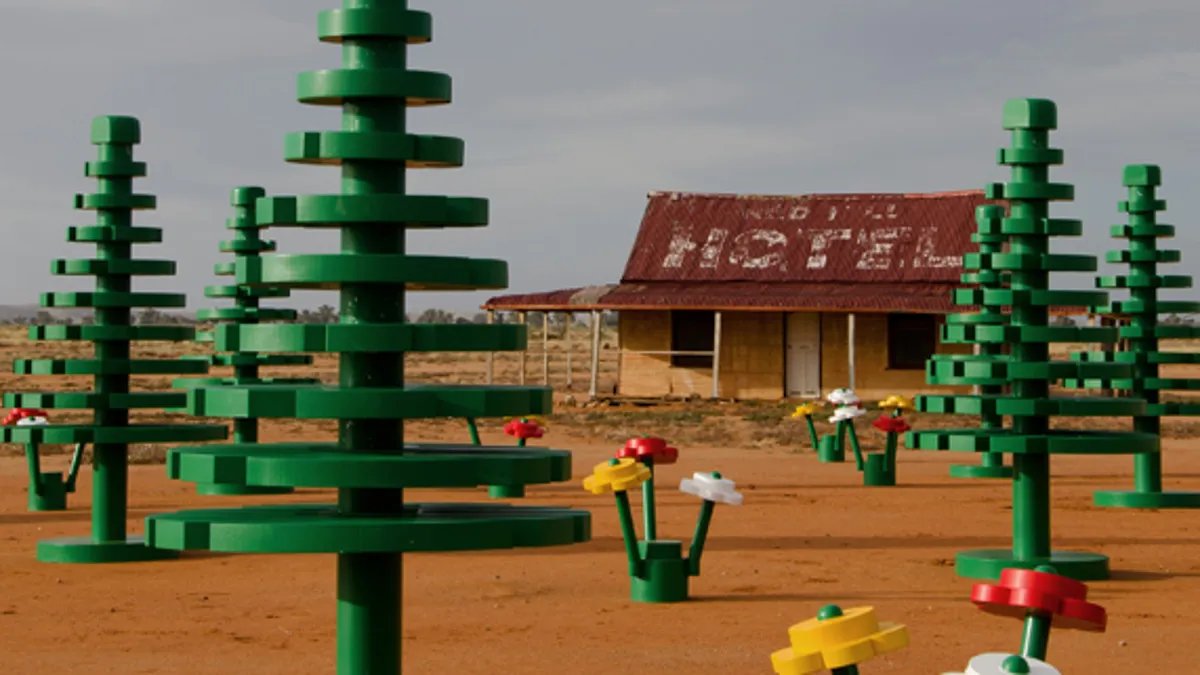
It's Not Easy Being Green... Even When You're LEGO

Outback LEGO Forest by LEGO Australia
In a world where brands come and go, one name has stood the test of time, capturing the hearts and imaginations of generations: LEGO.
From its humble beginnings over 90 years ago to its current status as the World's Most Reputable Company, LEGO has woven itself into the fabric of our lives, sparking creativity, problem-solving, and endless hours of joy for children and adults alike (including my family).
However, going green and introducing sustainability initiatives across your business processes and supply chains can introduce significant challenges, even for global powerhouse toymaker LEGO.
I’m passionate about brands (and have a soft spot for toys where I started my career) who are leading the change to do better. We can learn a lot from LEGO's bold and transparent approach to tackling sustainability, drawing valuable lessons for businesses and consumers alike.

Authenticity matters
LEGO's commitment to its values shines through in its actions. When children voiced concerns about single use plastic bags, LEGO didn't just listen—they acted by exploring alternative sustainable materials. By transitioning to paper bags, LEGO reduced its environmental footprint (which we’re all for), and it also makes us feel good about our visit to the store; such is the power of sustainability.
Data-driven decision making
Before making major changes, LEGO analysed the impact of transitioning to recycled PET. What they learnt through this assessment process was the transition to RPET would deliver a greater carbon footprint than the bricks they already had!
Why? Surely using recycled anything is better?
By measuring all aspects of the potential transition, LEGO learned that the environmental impact of acquiring new equipment and significant additional processing to strengthen RPET would be far greater than that of existing materials. As it turns out, ABS (Acrylonitrile Butadiene Styrene) was still the best option, and LEGO’s quest to find a better alternative continues.
While not all businesses have the same level of resources as LEGO at their disposal, we exist in a time when there are cost-effective tools (like those offered by Phantm) that can provide this level of data that can direct informed decision-making. Imagine the consequences of not doing their due diligence. This important assessment step enabled the team to make better decisions, save time, and head in a different direction with the innovation of their materials.
Pursue a bold vision, but be transparent with your progress
LEGO isn't content with resting on its laurels. With ambitious goals to achieve net zero emissions by 2030. They are investing billions in sustainability initiatives, with the LEGO Group leading the charge towards a greener future. But they're not afraid to share the bumps along the way, proving that transparency breeds trust.
If you’re keen to learn more, here is the latest update on where they're at.

Embracing setbacks
LEGO's decision to move away from RPET bricks is a prime example of what it takes to build trust. By openly discussing their challenges and reasons for change, LEGO fosters a culture of continuous improvement and innovation.

Exploring circular business models
LEGO isn't just focused on reducing its environmental impact – it's reimagining the entire toy industry.
Programs like LEGO Replay (currently in the US and Canada), which gives pre-loved bricks a new lease on life, demonstrate LEGO's commitment to circular business models.
Reluctantly, when the time comes, I will bundle up my LEGO and find it a new family to love it as much. They will be creative and inspire each other to build bigger and better towers, it’s a significant factor in the life cycle of LEGO, its simplicity gives it longevity, its impact at point of production is spread over a long time, reusing, re-loving LEGO, through generations is a great way to positively impact our environment.
Re-use and circular business models are finding success in other industries—perhaps there are lessons the toy industry could learn from fashion and e-commerce. Imagine if Kering or LVMH took a leadership position on adopting a re-sell model as part of their core business. Would we even have a Vestaire Collection?
By embracing reuse over recycling, LEGO sets the example for a more sustainable future.
Sustainability isn't just a goal; it's a journey
In a world where every decision counts, LEGO reminds us that being green isn't just about the end goal but the journey.
As we navigate the complexities of sustainability, let's take a page from the LEGO Group playbook: be authentic, data-driven, and unafraid to embrace change.
Repeat the process time and time again!
Phantm is here to help your business understand where you are today and be informed to make better decisions for tomorrow. We provide actionable insights to help your teams on your journey to do better. Feel free to contact us before you or your teams embark on your next product development project.
Find out the environmental impact of your packaging and products... even if they're still in the development phase (like LEGO did)
Learn More

